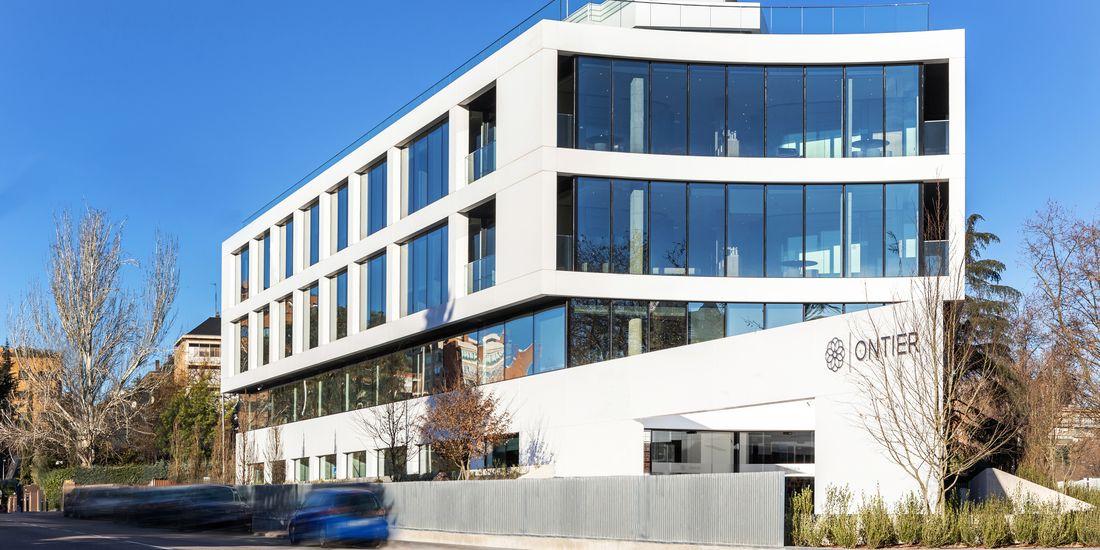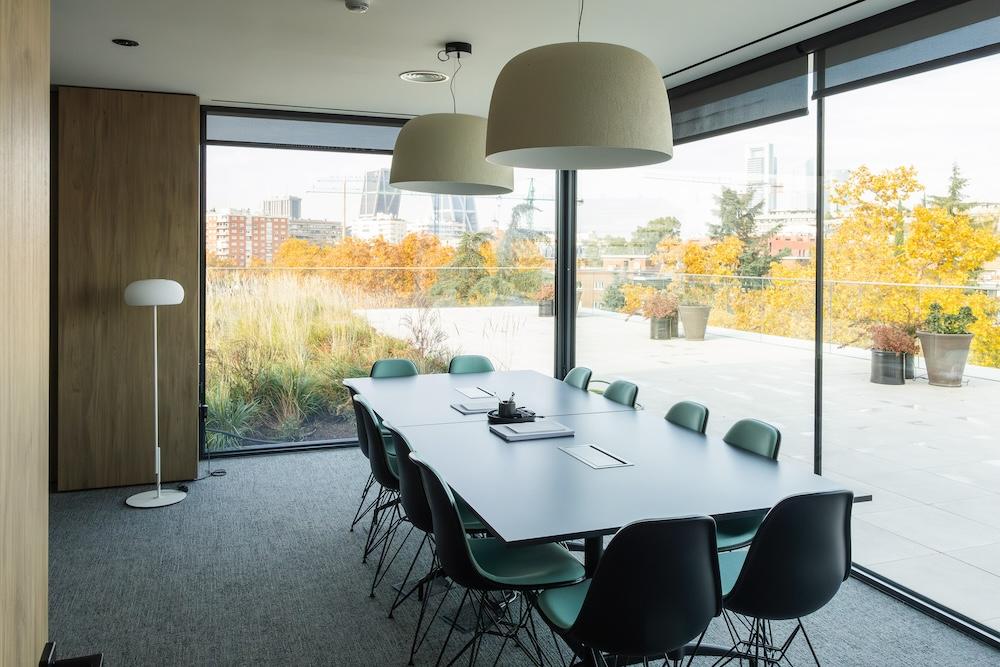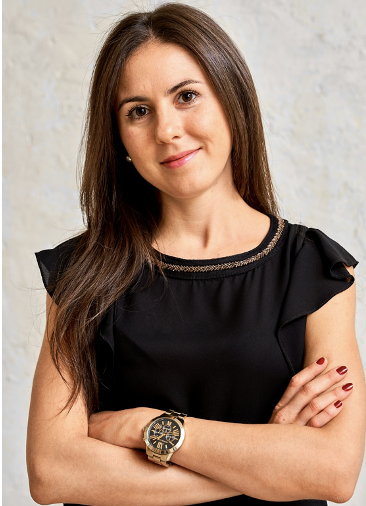Advancing Healthy Spaces in Spain, Helping Boost Occupant Health, Productivity and ESG Performance
IWBI sits down with Judit Sánchez González of Savills Spain, who is helping clients prioritize health in the Spanish real estate market.
By Yan Tai
When you meet Judit Sánchez González, you realize quickly how both her passion and expertise have helped shape her journey in sustainability. Based in the vibrant city of Madrid, Judit is a senior sustainability consultant at Savills Spain, where she merges her training in architecture and engineering with a keen understanding of the Spanish real estate market. Her work is often focused on guiding clients on their own journeys to become leaders in health and well-being by using the WELL Building Standard to improve occupant health and boost ESG performance. Her career is a testament to her dedication and adaptability, consistently delivering her best in every project she undertakes.
“My passion is sustainability,” says Judit, and it’s evident in all facets of her work. As a key member of Savills property management team, she works directly with clients and other project agents to conduct market analysis, craft strategic plans and ultimately help them achieve better working environments. For Judit, helping clients advance healthy building best practices through WELL is all about fostering a culture of health leadership and environmental stewardship in Spain’s real estate sector.
Recently, we had a chance to sit down with Judit to discuss her journey, insights and innovative projects that she’s spearheaded in the Spanish market.
Q: What kind of trends are you seeing in the wider real estate market in Spain, in regard to the healthy building movement?
At Savills, I have been able to work on all kinds of projects that have allowed me to understand the current trends in the Spanish market, as well as emerging ones. At the asset level, organizations have a long history of looking to maximize cost savings through efficiency and environmental leadership, which creates great value. But increasingly organizations realize they need efficiency and a focus on health and well-being , so that not only is the workplace efficient, it’s also people-centered. At the corporate level, organizations are increasingly demanding this type of space where they can align their ESG strategies with the type of workspaces they are delivering. At this point, it’s difficult for office buildings located in the prime area of Madrid to be competitive without WELL Certification, so when they require renovation or other interior work, many of these properties use that opportunity to pursue the certification.
Another trend in business parks on the outskirts of the Madrid city center, as is the case of NEOS20, is having health features, ample nearby services and public transportation, which is strongly aligned with aspects of WELL Certification. As they are outside the urban core of Madrid and are large spaces, they prioritize the use of common areas, which promote health and sustainability. And notably, it’s tenants that value WELL Certification and are the ones who continue to drive demand, which will make more and more assets want to adopt these characteristics.
Q: As a quick follow up, how are organizations in the Spanish market responding to a rapidly evolving workplace landscape?
The challenge of this era is to develop offices that attract employees where they can work comfortably, be healthy and happy, and have their needs within reach. By achieving that, the company is helping support increased productivity and therefore profitability and a strong return on investment. In addition, it helps them attract top talent by showing, often through WELL, that they value the health of their employees.
Q: Why did Aríma, a major real estate company in Spain, choose to pursue WELL across various project types?
Arima is striving to be a market leader, in sustainability, health and connectivity. They have pursued leading certifications in the market, such as WELL, LEED, BREEAM and WIREDSCORE. Through investment and commitment, they seek to obtain the highest possible level of certification. They want what’s best for occupants and their tenants, while also meeting their strong commitment to ESG objectives. WELL helps them do all of those and is reflected in how they approach their real estate decisions.
Q: What makes Arima’s HABANA Building a unique project in the Spanish market?
Habana Building project achieved Platinum level WELL Certification, demonstrating its world-class commitment to health and well-being. By prioritizing health, the project really set itself apart. As an existing building that underwent a complete renovation, the project was carried out in a way that health and sustainability certifications were integrated from the beginning. There are so many standout features. One is the biophilia, which is a very present throughout the project, from wood elements in all the common areas, to the use of plants and wood in other parts the building. But most of all, it is clear that the people inside were the organization’s priority at the time of strategy development and it shows in the final product and through the WELL achievement.
Q: How is the role of improving ESG performance affecting the market?
The companies that occupy office buildings are the ones who are increasingly demanding spaces that are attuned to health and well-being. We also see the clear evolution of the office building market where, in addition to energy certifications, and health leadership, like WELL Certification, can help support the social aspects of ESG. And that helps companies align their corporate ESG strategies with how their buildings are positioned to support their most valuable asset, their people. I believe Spanish companies as well as any company with operations in the EU will find the alignment even more important when they start reporting in 2025 under the newly-enacted European Sustainability Reporting Standards (ESRS) framework. Achieved WELL features can help support many topical areas required for ESRS disclosure, especially within the Social pillar.
Q: What are some successes you’ve seen as they relate to the WELL process?
For me a great success of the WELL Certification is the pre-certification phase, obtaining this seems to me fundamental for all projects. It gives us a vision of where the project is and if there are other strategies to attain more features in the final phase. From SAVILLS, we encourage all our clients to pursue this milestone and find ways to achieve even higher levels of certification. This phase also establishes a moment of collaboration between all the agents of the project at a very early stage. This is a very important milestone for the commercialization of the assets and implies a commitment from the property to meet the proposed objectives.
Another important area to highlight is the Performance Verification, where much of the work culminates through evaluation and testing. This is an exhaustive evaluation that gives value to the certification and is what the future occupants of the buildings demand.
Q: What future projects will emerge in the Spanish market?
More future WELL projects will be residential, senior living and hotel projects. If we are looking for offices focused on people, the logical trend is that in the same way users will look for homes with these features. Every day we are more aware of the time we spend inside buildings and how our indoor environments affect our health.
I would like to highlight a segment that I think is very important to have WELL certification, and this is the residences for the elderly. These are places where our elders spend most of their time, and these spaces should show leadership in health. The hotel sector is another big opportunity for this certification. For holiday tourists looking for a place to rest and the many business travelers, it’s important that these facilities are attuned to well-being.
View original content here.




